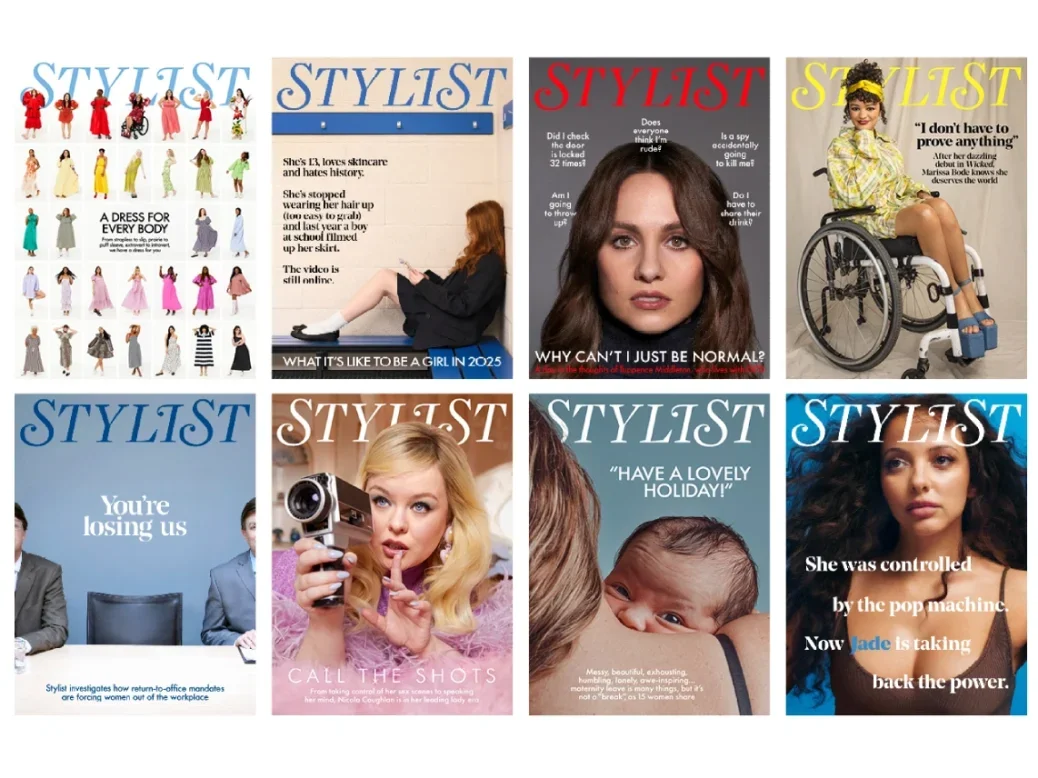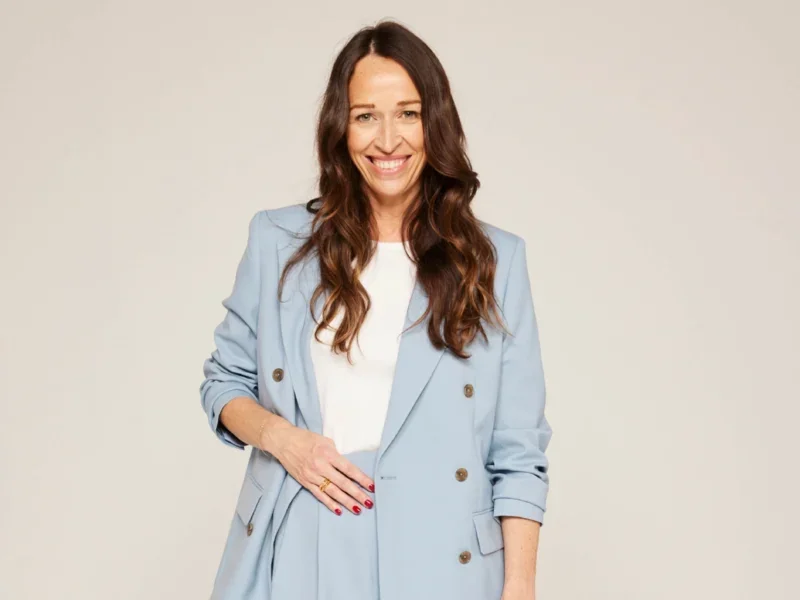
Being a “purpose-driven” brand has helped women’s title Stylist survive through the past decade of turbulence for media, according to its editorial director.
DC Thomson-owned Stylist has now pivoted towards focusing on its core community through paid subscriptions and memberships and is approaching 10,000 paying digital subscribers.
Stylist began as a free weekly women’s magazine in October 2009. It went monthly in 2022 but continues to distribute for free on the street and in locations like airports, hotels and shops.
Women’s magazines have seen a litany of closures in print or both print and digital since Stylist launched, including Marie Claire UK, Now, Reveal, Glamour, InStyle UK, Look, More, Lucky and No. 1. Digital-only brands The Pool and Gal-dem also collapsed.
The free weekly market has been even more turbulent with Coach closing in 2017, Shortlist ending in 2018, NME closing the same year and Time Out closing its free weekly print edition in 2022.
Editorial director Lisa Smosarski credits Stylist’s survival on several things: “One is this absolute, clear understanding of who we are as a brand and what we stand for, which I think we were able to communicate to our audience from the moment we launched… this kind of championing, celebration and advocacy for women.”
She also highlighted an agility and willingness to adapt. “Stylist is 15 years old now, and we were cutting edge with the format that we distributed with, but it wasn’t the distribution that made us successful, it was that brand DNA… we’ve never deviated from those initial promises that we made to the audience so we’ve retained a huge amount of our audience, but also we’ve brought in new users using digital platforms.”
Smosarski also credited the fact that “the audience believe it’s their brand. So from day dot, I would get emails saying ‘this is what I wanted in Stylist. This is what I expect from you.’
“We were really held to account by the audience, and I think we listened and we changed and we learned from that. So they really felt it was democratised.”
This aspect has continued into the current VIP offering, Smosarski added, by giving members “the opportunity to shape and sculpt Stylist” for example by voting on covers.
“I think that willingness to listen and not think we were right all the time and to adapt and to change and to try new things just kept us slightly ahead of the pack.”
Stylist currently has a team of about 25 people in editorial and is currently investing in social and video.
At its start, Stylist had an average distribution of 410,674 in print.
In 2024 it had an average monthly circulation of 327,540 which included 305,564 free print copies, 1,300 paid print subscriptions and 15,784 readers on digital all-you-can-read subscriptions like Apple News and Readly (through which publishers get paid by consumption of their product).
According to Smosarski, Stylist had a “brilliant year” in print in 2024 with revenue and circulation both remaining “really strong”.
“We can never give enough Stylists away – it’s always been our biggest challenge, monitoring the emails asking where people can access it,” she said. Print also remains a “great discovery mechanic for coming in to discover the rest of the brand”.
Smosarski added: “It’s very robust in terms of ad revenue. We’ve had incredible advertising and support from some really big brand partners who really still prioritise print in the mix.”
Stylist ‘supercharged’ focus on digital subscriptions
Meanwhile the Stylist website had a UK audience of 1.2 million in April, according to Ipsos iris.
About 25% of Stylist’s content produced online each month is paywalled.
There are two types of ways to pay for Stylist: a Stylist+ subscription (£4.49 per month or £41.88 per year) includes access behind the paywall online and in the app, weekly digital magazines and exclusive newsletters.
Being a Stylist VIP (£69 per year or £22 per quarter) gets all of the above plus the monthly print magazine delivered, members-only events, discounts to the main Stylist events and other discounts and offers.
Smosarski said that although Stylist began experimenting with a paywall in December 2021, focus and attention on subscriptions was “supercharged” last year with the launch of the new packages in April and a new app that has had 25,000 downloads so far.
She added that dwell time and return visits on the app are both “really high”. “That has been a really important part of the membership offering,” she explained.
“We know that Stylist fans love the fact that you can come in through Instagram, or you can come directly to the website or pick up the magazine, but actually we wanted everything that they loved in one home.”
Some content is approached with the most loyal audience in mind and is paywalled as a result. Smosarski said of the commissioning process: “We’re not platform agnostic. We do write for print, we do write for social first, and we do write for paywall digitally, but all of the team will work across all of the platforms…
“We feel that quite strongly, actually – that we are able to deliver better content for our audience by commissioning to platform, and that makes it more discoverable in the digital space, but also gives it the breadth and the ability to take a big, deep dive in print still as well.”

The app and subscriptions strategy is also setting Stylist up to protect itself amid changes in search and AI that publishers expect will result in fewer clickthroughs from Google.
Smosarski said she feels “relatively pragmatic” after living through Facebook algorithm changes and making sure Stylist is not too dependent on any one source.
“We’ve gone for a known user strategy for a long time now. So we have big email databases, we use different social platforms in different ways to make sure that we have lots of different touch points with our audience, and we have a lot of direct users, and the app is part of that strategy.”
Overall, Smosarski said: “The shape of the business has changed a lot over the last few years, but at the heart I think one of the things that’s special about Stylist and has given us longevity is the fact that we’re still very true to the core cause to help women.
“So we remain a champion and advocate of our audience, and although we’ve changed as a brand in terms of where we serve our content or how we speak to the audience, that mission’s remained the same.”
A recent example is the Every Loss Counts campaign, which aimed to amplify conversations around pregnancy loss and get miscarriages officially tracked in England, and led to a meeting with Health Secretary Wes Streeting about the current situation for women.
This has also helped lead to Smosarksi’s position that: “What I’m not interested in is content creation through AI.” She said Stylist has a “human-first approach” and its content empathises with what it feels like to be a woman.
As a result, she said, “you will see more and more human-fronted content, because we want to show that we really understand what it means to be you at this current time. So for us, there’s no room for AI-created content because I think it would challenge the trust that we offer at the moment, I think it would break that connection that we understand this audience really well.”
The biggest compliment a reader could give Smosarski and the Stylist team is that “you’re in my head. You know what I’m thinking and feeling.”
She said: “If we’re not completely audience first in our thinking, we lose our way. We become any other title that’s offering content to women.
“We really need that unique take, which is: what is she really thinking? How is she behaving? What is she worried about? And rather than exploiting that, how do we support her through whatever she’s experiencing, or educate her or hold her hand or take on a fight on her behalf?”
That understanding of women led Stylist last year to launch the Think Stylist insight agency, sharing its knowledge with other brands.
Video, sub-topics and events
Stylist is about a kick off a new video strategy, which Smosarski described as a “step change in terms of how much video we’re producing”.
She added: “We know that video is a really powerful medium when it’s used correctly, and we’ve had lots of incarnations of video through Stylist’s history.
“We had a big video strategy around Facebook many years ago. We’ve had a constant kind of drip feed of video coming through.
“But I think it’s really important again for us to adapt and recognise that we need to be producing more video in this space.”
Stylist has also been leaning into certain sub-topics like parenting using newsletters (a monthly Motherhood series) and podcasts (a Mother Lovers Club series that ran last year).
Smosarski said that although Stylist’s core demographic is women aged 25 to 45, there are many smaller communities within the larger audience.
About half of the audience have children so this means they “have to be really careful about how to navigate that in the core brand”.
Although they don’t do “a huge amount of parenting or speaking to our audience in mum mode, but we found both podcasts and email as a really effective way to connect with smaller audiences without impacting that core brand”, Smosarski said, adding that it is a “really great way for us to grow our audience, but also to superserve those loyal people as they’re adapting and growing up with us as well”.
This is an advantage digital has over print, she added: “One of the things as an editor, I actually love about digital media and the transformation with different platforms is that you can come to Stylist for lots of different things and lots of different reasons, and have a very different experience.
“I think often old school print editors were scared of that. They wanted that to be a curated version of what they wanted the audience to deliver… But actually, I really love the fact that we can have very diverse experiences in our different users that come to us.
“So if you only want fashion, beauty and shopping, you can come for that, and you can understand what the brand represents. But equally, if you’re here for gender politics, you want to discover new and interesting things, cultural things, you can have all of those different experiences.”
Stylist also runs two flagship events: Stylist Live, which saw 7,000 women visit for talks, fashion shows, book signings and more over a weekend last year and will be refreshed at a new venue this October, and the Stylist Strong Women Trek sponsored by Intrepid which is running one event in Surrey this summer and one in the Lake District.
Smosarski described the treks as a “personal challenge for women who can’t do big triathlons, can’t run, but actually want to come together, but most importantly, want to connect and chat to other women and have this kind of shared experience… they’re really about community and they’re really about how we get our most loyal audience members together.
“We know that this is really important as part of the subscription and membership. It’s where everything kind of collides in one space.”
Email pged@pressgazette.co.uk to point out mistakes, provide story tips or send in a letter for publication on our "Letters Page" blog
